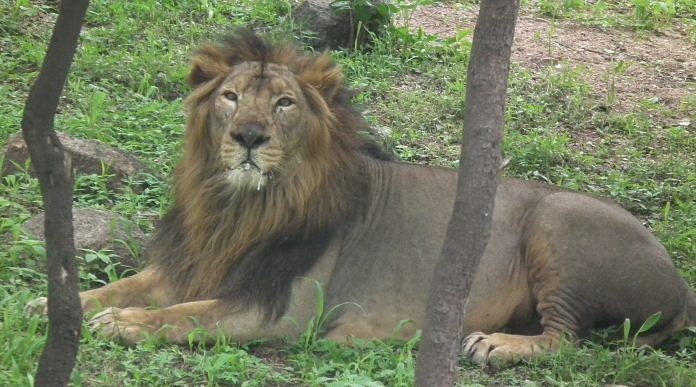New Delhi: The near complete absence of genetic diversity in Indian lions is putting the species at risk of extinction, a study of the genomes of extinct and living lions suggests.
Researchers from the University of Copenhagen, Barcelona Institute of Science and Technology and others analysed the remains of the now-extinct lions, including Pleistocene cave lions and other historically extinct populations in Africa and the Middle East.
They compared the results of this analysis with modern lions from Africa and India.
Indian lions have been living in a comparatively small area for centuries and therefore inbreeding often took place, claims the study.
This resulted in cranial defects, low sperm count and testosterone levels, as well as smaller manes, according to the report published in the journal Proceedings of the National Academy of Sciences Thursday.
This lack of genetic diversity may impact the conservation efforts to save the Indian lion population from extinction.
Also read: Food baits could impact hunting skills of younger Asiatic lions in Gir, finds study
Indian lions were not artificially brought to the country
The study found that cave lions and the modern lions shared an ancestor till about 5,00,000 years ago.
It also discovered that within modern lions, two main lineages that used to live in Central and Western Africa diverged from the ancestors of the subspecies that used to inhabit Northern Africa about 70,000 years ago.
The descendants of the subspecies from Northern Africa inhabit India now, the report found. This suggests that lions migrated through corridors between Sub-Saharan African and the Near East that may have existed in the past, for instance, through the Nile basin.
It dispels a popular myth about lions being artificially brought to India in the pre-colonial era.
“The obtained results demonstrate the power given to us by the era of genome research. We can apply it to discover the secrets of the past by reading the fragments of DNA taken from modern species’ ancestors. Apart from that, a troubling reduction in Indian lion genetic material was proved,” said Stephen O’Brien from the ITMO University in Russia, who was involved in the study.
In the last two centuries, the global population of lions has decreased by 90 per cent. Apart from zoos, these lion populations now only exist in Western and Central Africa, as well as in the Gir National Park and Wildlife Sanctuary in Gujarat.
To understand how the lion population reduced, scientists looked at the genome to understand their evolutionary history.
Fossil records are usually used to understand the movement and evolution of species. However, genome sequencing allows scientists to obtain a more complete picture of the evolution of the species through information encoded in the DNA.
Here, scientists analysed the genome of two extinct Pleistocene cave lions, 12 lions from historically extinct populations in Africa and the Middle East, and 6 modern lions from Africa and India.
Also read: Don’t go by global Red List on animals at risk. They mislabel many



